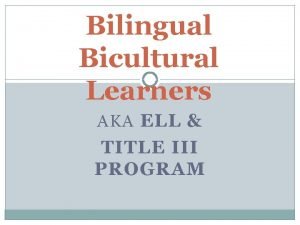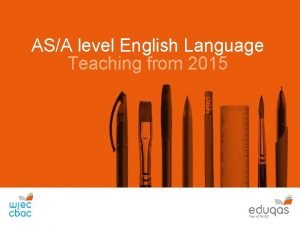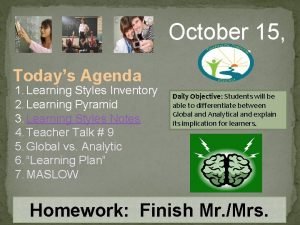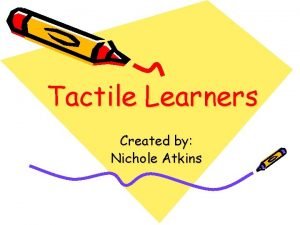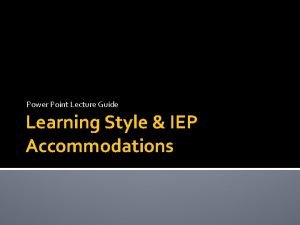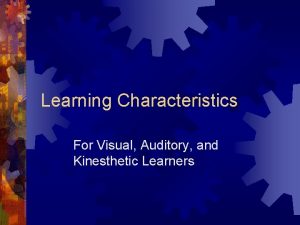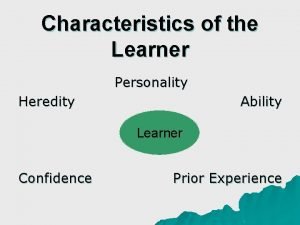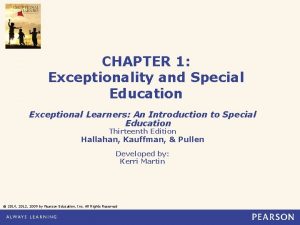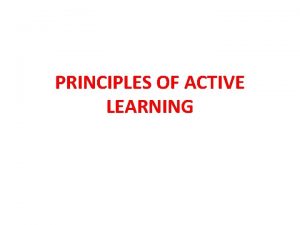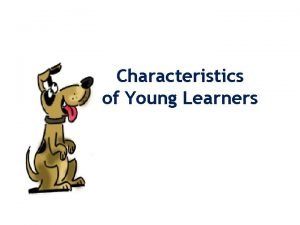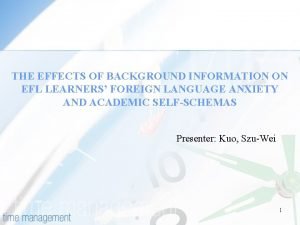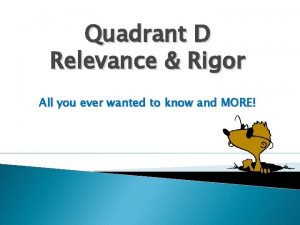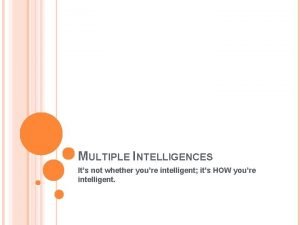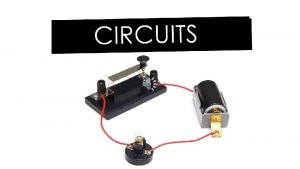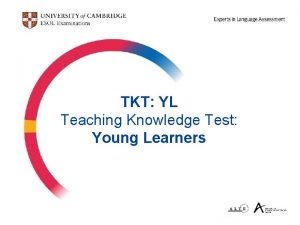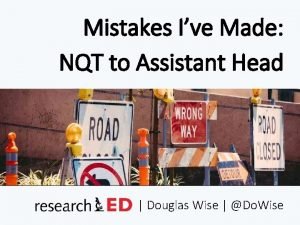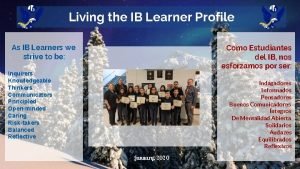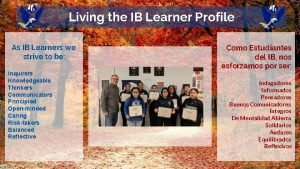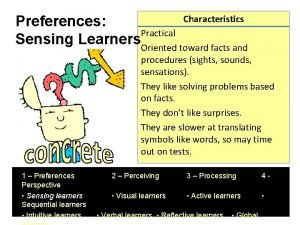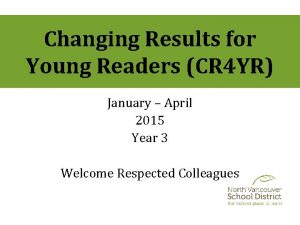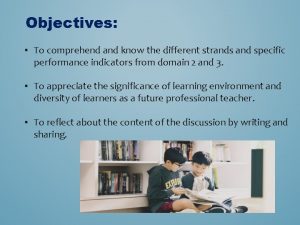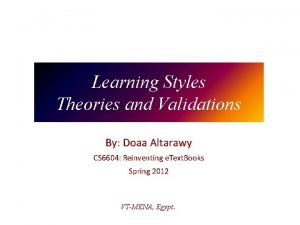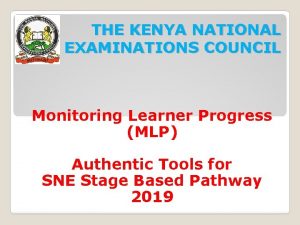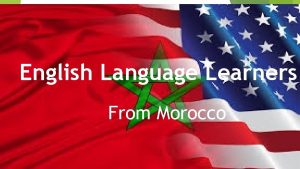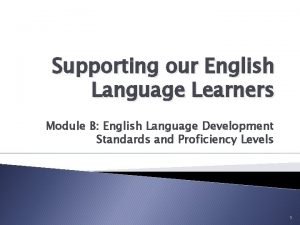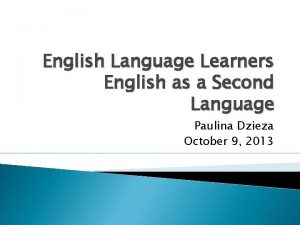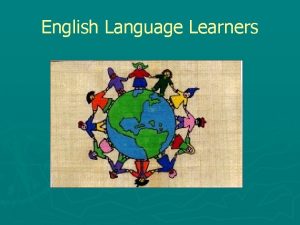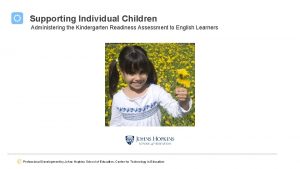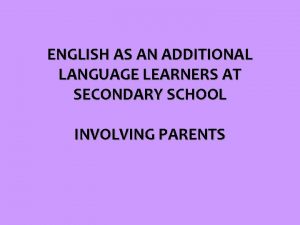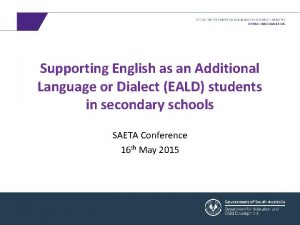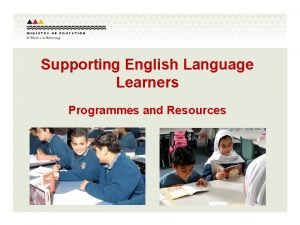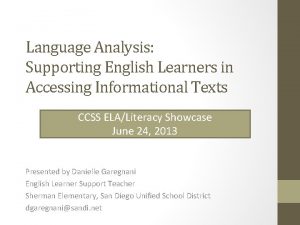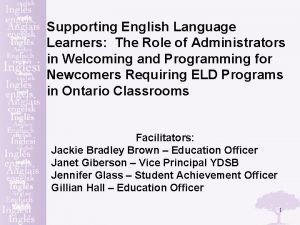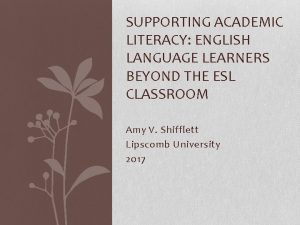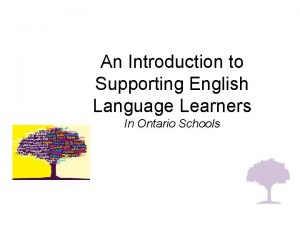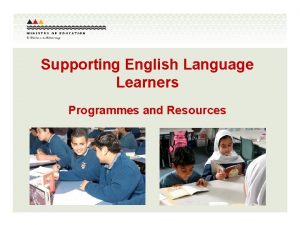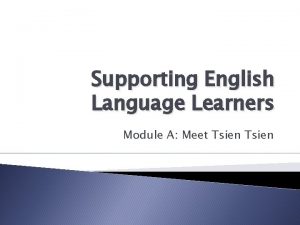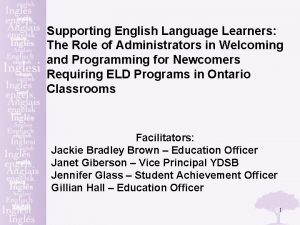Supporting learners with English as an Additional Language






































- Slides: 38

Supporting learners with English as an Additional Language Kamil Trzebiatowski The University of Hull Newly Qualified Teachers Conference 29 January 2016 EAL Coordinator at Newland School for Girls, Hull EAL Academy Associate Trainer Member of NALDIC Publications Committee ATL Rep MA Linguistics, MEd Inclusive Education Pedagoo Curator Member of NALDIC, NATE and UKLA Teacher, Trainer, Speaker, Writer, Blogger Twitter: @ktlangspec / email: ktlangspec@gmail. com / KTrzebiatowski@newland. hull. sch. uk http: //valuediversity-teacher. co. uk/

Temat: Co przedstawia obraz Matejki? Słowa kluczowe: Bitwa Grunwald Jan Matejko unia polsko-litewska Rzeczpospolita Obojga Narodów Zakon Krzyżacki 1410 r. Cel lekcji: Będę umiał/a wytłumaczyć, co się dzieje na obrazie Jana Matejki (ustnie). Będę umiał/a napisać krótki tekst na ten temat.

Temat: Co przedstawia obraz Matejki? 1410 r. Słowa kluczowe: 2016 r. Obraz Bitwa Grunwald Jan Matejko unia polsko-litewska Rzeczpospolita Obojga Narodów Zakon Krzyżacki 1410 r. 45 000

Temat: Co przedstawia obraz Matejki? Słowa kluczowe: Bitwa Grunwald Jan Matejko unia polsko-litewska Rzeczpospolita Obojga Narodów Zakon Krzyżacki 1410 r. Cel lekcji: Będę umiał/a wytłumaczyć, co się dzieje na obrazie Jana Matejki (ustnie). Będę umiał/a napisać krótki tekst na ten temat.

Who are English as an Additional Language Learners? Learning in another language Learn through another language Come from backgrounds and communities = different understandings and expectations of education NALDIC (1999) The Distinctiveness of English as an Additional Language: a cross-curriculum discipline: A Handbook for All Teachers

Factors influencing language development of EAL students Age when they enter the educational system Their previous experience of school (or lack thereof) Their literacy in their L 1 (first language) Their knowledge and understanding of language and school curriculum Home expectations and understanding of the education system Support for learning and language at school and community NALDIC (1999) The Distinctiveness of English as an Additional Language: a cross-curriculum discipline: A Handbook for All Teachers

The task ahead of EAL learners EAL Learners have to: • Learn English • Learn content through the curriculum • Socialise with other children in the yet-unlearnt language • Learn culturally-embedded social practices of the classroom If a child is 3 years behind (linguistically), every year they need to make 1 ½ years of progress (for 6 years) to catch up with native speakers. BASS (2006) Distinguishing the difference – SEN or EAL? NALDIC (1999) The Distinctiveness of English as an Additional Language: a cross-curriculum discipline: A Handbook for All Teachers Catching up is essentially EAL children’s problem – curriculum doesn’t wait. EAL children have a moving target.

EAL Pedagogy Classroom context Level of English Strategies: Support English language development In context Prior knowledge Age Socio-economic background Cultural background L 1 literacy Attitude to learning

Cummins’s Framework Quadrant Cognitively demanding work Activities requiring deep thinking B C A D Concrete Context embedded Abstract Context reduced (pupils have little knowledge and can’t relate to it) Cognitively undemanding work Activities that can be completed without much thought For CALP, Quadrant B is required; for lessons in C: linguistic and contextual support is required; D is tempting (copying is one example), but should be avoided!

Cummins: Thinking Skills Cognitively demanding Generalises Compares and contrasts Summarises Plans Classifies by known criteria Transforms and personalises Recalls and reviews information Seeks solutions to problems Context embedded Reading to find specific information: • Identifies, names, matches, retells Transfers information from one medium to another: • Applies known procedures • Describes observations • Sequences • Narrates with sense of beginning, middle, and end B C A D Argues a case using evidence Identifies criteria persuasively Develops and sustains ideas Justifies opinion or judgment Evaluates critically Interprets evidence & makes deductions Forms hypotheses, asks further questions for investigation, predicts results Applies principles to new situation Analyses, suggests solution and tests Context reduced Parrots: repeats utterances of adult or peers Copies: reproduces information from board or texts Cognitively undemanding

Good practice for pupils learning EAL Activate prior knowledge • Questioning • KWL charts • Brainstorming • Discovery tasks Provide rich contextual background • Key visuals (aka graphic organizers) Encourage comprehensible output • Peer tutoring • Collaborative learning • Drama / role play • Scaffolding (scaffolded writing) Key grammar points made explicit Develop learner independence • E. g. expressing doubt (may/might) • E. g. ways of talking about the past (I did vs. I was doing) • E. g. language to express politeness when making requests • Scanning texts • Looking at subheadings prior to reading • Dictagloss • Using diagrams to show knowledge

Delivering the content to EAL learners Scaffolding (substitution tables, writing frames, oral frameworks) Demonstrations Realia, video, artefacts, charts Key visuals / graphic organizers Modelling of the use of key language features DARTs and CLIL Different forms of questioning: closed, open, concrete, abstract Collaborative learning

CLASSIFICATION PRINCIPLES EVALUATION DESCRIPTION SEQUENCE CHOICE To describe something you need to be able to classify, We create order informed by our understanding of principles behind the order. We create sequences because we know what we’re trying to achieve: In order to make a choice, one has to be able to evaluate available options. We have to understand how these options are justified. Instructions for lab reports (Science) In a salt-and-sand mixture (Science) we do not pick salt with tweezers; we use understanding of solubility to wash the salt out. a description of triangles in Maths requires understanding the types of triangles A description of games in PE requires understanding types games, strategies and equipment Mathematical solutions (Maths) Baking (Food Technology) Adapted from: Mohan, B. (1986) Language and Content. Addison-Wesley: Reading, Massachusetts. Slater, T. and Gleason, J. (2011) Integrating Language and Content: Mohan: Knowledge Structures, Graphic Organizers and Associated Language

Classification

Principles

Evaluation

Description

Sequence

Choice

There are three kinds of dogs that I like best. I like Pugs because they are companion dogs and have cute faces. Boston Terriers are on my list because they are intelligent and not too big. I also like Golden Labrador Retrievers because they are faithful, loving, and fun to play with. Adapted from http: //tslater. public. iastate. edu/kf/powerpoint. html There are three types of triangles: equilateral, isosceles and scalene. Equilateral triangles are made up of three equal sides and three equal angles. Isosceles triangles are made up of two equal sides and two equal angles. Scalene triangles are made up of unequal sides and unequal angles. Scalene triangles look the most unsymmetrical.

Because of this… Therefore… That’s why… Hence… Thus…

Substitution tables

Activating Prior Knowledge • Questioning • KWL (Know, Want to find out, Learned) charts • brainstorming in small groups or pairs • discovery tasks • enabling use of first language. What’s missing here? Language! STRATEGY: KWL WITH LANGUAGE

Substitution tables Stevie Smith creates the persona of a river with enduring physical power. Stevie Smith The author The writer The poet creates forges constructs devises the personality the character of a river with enduring lasting strong unyielding persistent physical power. All the parts are a working circulation system. All the parts the elements the components are constitute compose form make up a an working functioning operational circulation system.

Alternative to typical comprehension questions Encourages students to work with texts in a way that promotes greater understanding DARTs: Directed activities related to text Chance for learners to “read between the lines” (implied meaning) – not only basic understanding Supporting learners in analysing and reconstruction of texts

CHANGE THE TEXT A LITTLE Gap-fills: missing words, phrases or sentences Sequencing – words, paragraphs, sentences Completing a table, diagram or flowchart Grouping parts of texts according to categories Labelling a diagram USE THE ORIGINAL TEXT Write questions about a text Underline or highlight parts of texts: e. g. adjectives, adverbs, connectives Draw a table or diagram using information from a text Give each paragraph a title

Many different possibilities to fill in the gap SPECIFIC CLOZE • Remove only certain types of words, e. g. subjectspecific words, parts of speech or tenses A ______ is a group of ______ teachers that have got together to ______ ideas. Functional (grammar words): one option only _____ Teach. Meet is a group ____ enthusiastic teachers that have got together _______ share ideas. ! Discuss when there are many possibilities and when there is just one First and last sentence should remain unmodified – so that students have a context for reading it all.

VANISHING CLOZE • Write a few sentences on the board – what you feel needs practising • Get them to read it out loud • Erase one word – they read it • Repeat until all words are erased VANISHING CLOZE An of ! equilateral triangle is a triangle with all three sides equal length. A great tool for students to explore parts of speech and sentence structure bit by bit.

GAP-FILLS WITH A DIFFERENCE • Provide a list of words in a box • Ensure they are all one category (e. g. prepositions or verbs) • Discuss how they’re used in sentences (word order) A PREPOSITION GAP FILL She was dressed __ rich materials - satins, and lace, and silks - all __ white. Her shoes were white. And she had a long white veil dependent ____ her hair, and she had bridal flowers __ her hair, ___ her hair was white. Some bright jewels sparkled __ her neck and __ her hands, and some other jewels lay sparkling __ the table. Dresses, less splendid than the dress she wore, and half-packed trunks were scattered _____. She had not quite finished dressing, ___ she had ___ one shoe __ - the other was __ the table ____ her hand - her veil was half arranged, her watch and chain were not put __, and some lace ___ her bosom lay ____ those trinkets and ____ her handkerchief, and gloves, and some flowers, and a prayer-book-, all confusedly heaped _____ the looking-glass. Choose from the words in the box In near on of with about but from for What part of speech are all these words? Are the verbs before or after them?

CLIL – Focus on language through your content STRATEGY: DARTs: REMOVE SPECIFIC GRAMMAR ITEMS 1. The Scottish army is ____ war with the Norwegian army. 2. Duncan, king _____ Scotland, meets a captain returning from battle. 3. The captain informs them _____ Macbeth and Banquo's bravery _____ battle. 4. He also describes Macbeth's attack _____ the castle _____ the treacherous Macdonald, _____ which Macbeth triumphed and planted Macdonald’s head _____ the battlements _____ the castle. 5. The Thanes of Ross and Angus enter _____ the news that the Thane _____ Cawdor has sided _____ Norway. 6. Duncan decides to execute the disloyal thane and give the title _____ Cawdor _____ Macbeth. Summary of Sc 1, Act 2 from: http: //www. gradesaver. com/macbeth/study-guide/summary-act-1 Why not give these as strips and get your EAL learners to reorder them after putting in prepositions? Differentiate by providing a box with missing prepositions under the activity (or not).

STRATEGY: PLENARY (or starter) WORD MAP Adapted from material presented by @Di. Leed at

CERTAINLY SEEMS TO BE APPEARS TO BE UNDOUBTEDLY USUALLY IRREFUTABLY UNLIKELY Adverbs / adverbial phrases of certainty NEXT FURTHER SUBSEQUENTLY FOLLOWING THIS LATER AFTERWARDS THEN Spoken-like to academic CAN MIGHT MAY COULD OUGHT TO IS MIGHT POSSIBLY Modal verbs of certainty/uncertainty

Practical tasks: • Think about a lesson you’ve had either this week, or you’ve choose one: 1 2 3 already had planned for the new week. • Create a graphic organizer on the A 3 sheet of paper. • Look at the material provided to you. • Can you present the information to the student using a substitution table? • Look at the text given to you. • Create a CLIL/DARTs activity where what is asked of a student focuses specifically on language not content (e. g. present simple tense use, prepositions, articles, adjectives only, etc).

Essential Reading and Resources • Creese, Angela. Teacher Collaboration And Talk In Multilingual Classrooms. Clevedon [England]: Multilingual Matters, 2005. Print. • Deller, Sheelagh, and Christine Price. Teaching Other Subjects Through English. Oxford: Xford University Press, 2007. Print. • Derewianka, Beverly. Exploring How Texts Work. Print. • Distinguishing The Difference: SEN Or EAL? . 1 st ed. Birmingham: BASS, 2003. Web. 28 Jan. 2016. • Eal. britishcouncil. org, . "British Council EAL Nexus". N. p. , 2016. Web. 28 Jan. 2016. • Gibbons, Pauline. English Learners, Academic Literacy, And Thinking. Portsmouth, NH: Heinemann, 2009. Print. • Gibbons, Pauline. Learning To Learn In A Second Language. Portsmouth, NH: Heinemann, 1991. Print. • Gibbons, Pauline. Scaffolding Language, Scaffolding Learning. Portsmouth, NH: Heinemann, 2002. Print. • Graf, Madeleine. Including And Supporting Learners Of English As An Additional Language. New York: Continuum International Pub. Group, 2011. Print. • Gravelle, Maggie. Planning For Bilingual Learners. Stoke-on-Trent: Trentham, 2000. Print.

Essential Reading and Resources • Mc. William, Norah. What's In A Word? . Stoke on Trent: Trentham Books, 1998. Print. • Mercer, Neil. The Guided Construction Of Knowledge. Clevedon: Multilingual Matters Ltd, 1995. Print. • Meshguides. org, . "EAL | Meshguides". N. p. , 2016. Web. 28 Jan. 2016. • Mohan, Bernard A, Constant Leung, and Chris Davison. English As A Second Language In The Mainstream. Harlow, England: Longman, 2001. Print. • Naldic. org. uk, . "NALDIC | Home". N. p. , 2016. Web. 28 Jan. 2016. • Nassea. org. uk, . "NASSEA". N. p. , 2016. Web. 28 Jan. 2016. • Pim, Chris. 100 Ideas For Supporting Learners With EAL. New York: Continuum, 2012. Print. • Schneider, Claudia. School Approaches To The Education Of EAL Students. Cambridge: The Bell Foundation, 2014. Print. • Thomas, Wayne, and Virginia Collier. A National Study Of School Effectiveness For Language Minority Students' Long-Term Academic Achievement. CREDE, 1997. Web. 28 Jan. 2016. • Washbourne, Alice, and Phil Hailstone. EAL Pocketbook. Alresford: Teachers' Pocketbooks, 2011. Print.



EAL Conference 1 July 2016 Newland School for Girls Kingston-upon-Hull Not for EAL specialists; aimed directly at mainstream teachers. Individual subject workshops. Workshops will be led by some of the top specialists in the country. Stay in touch for updates as the date draws near.
 Language tools
Language tools English language learners
English language learners Reading strategies for english language learners
Reading strategies for english language learners Cr part 154
Cr part 154 Unit 12 additional needs
Unit 12 additional needs Teaching young learners english
Teaching young learners english A level english language language change
A level english language language change Global vs analytical learners
Global vs analytical learners What is grammar
What is grammar Facts about tactile learners
Facts about tactile learners 10 objectives of remedial instruction
10 objectives of remedial instruction Global vs analytical learners
Global vs analytical learners Kinesthetic learner characteristics
Kinesthetic learner characteristics Eager learning algorithm
Eager learning algorithm Revision techniques for kinesthetic learners
Revision techniques for kinesthetic learners When is cognitivism beneficial for learners
When is cognitivism beneficial for learners What is global-analytic continuum
What is global-analytic continuum Article v the teachers and the profession
Article v the teachers and the profession Inheritance characteristics
Inheritance characteristics Exceptional learners: an introduction to special education
Exceptional learners: an introduction to special education Active learning principles
Active learning principles Involuntary attention meaning
Involuntary attention meaning Questioning and discussion techniques
Questioning and discussion techniques Background information for learners
Background information for learners Rigor relevance quadrants
Rigor relevance quadrants Government program for gifted students in the philippines
Government program for gifted students in the philippines Intrapersonal intelligence famous person
Intrapersonal intelligence famous person The learners will be able to
The learners will be able to Tkt yl
Tkt yl Graham nuttall the hidden lives of learners
Graham nuttall the hidden lives of learners Inquirer ib profile
Inquirer ib profile Ib learners profile
Ib learners profile Global learners characteristics
Global learners characteristics Changing results for young learners
Changing results for young learners Technology for diverse learners
Technology for diverse learners Passive learning vs active learning
Passive learning vs active learning Diversity of learners
Diversity of learners Impulsive learners
Impulsive learners Knec monitoring learners' progress
Knec monitoring learners' progress

